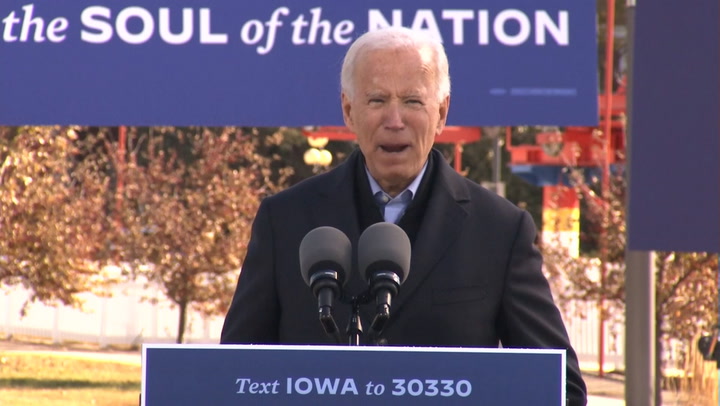Epstein donations force resignation at international peace organization
By Richard Roth, CNN
The president of an international think tank has resigned following revelations that he accepted a loan from accused sex trafficker Jeffrey Epstein and secured $650,000 in donations from foundations linked to Epstein for the peace organization.

Larsen was a key broker of the 1990s Oslo Middle East peace accords and represented the UN on several peace assignments around the globe.
The United Nations announced Friday it has withdrawn from its role as honorary chair of the IPI, following the resignation of Rød-Larsen.
Citing the office's independence and status, UN spokesman Stephane Dujarric said the UN secretary-general, after a review, has decided not to serve in any capacity in the governance of any outside entity.
The institute is an independent organization that promotes UN causes. It was founded 50 years ago with the assistance of former UN Secretary-General U Thant.
IPI board Chairman Kevin Rudd, the former Australian prime minister, denied IPI was aware of the Epstein-related donations or the personal loan to Larsen until media reports in the veteran diplomat's home country of Norway.
Rudd said in a statement he was "blindsided."
"Mr. Rød-Larsen has apologized to the Board for what he has described as his grave error of judgment, Rudd said. "I am deeply disappointed that the Board has had to learn about so much of this through the media."
In a separate statement, the IPI board said, ''Epstein's crimes were hideous. The notion that IPI would be in any way engaged with such an odious character is repugnant to the institution's core values."
Earlier this month, the Norwegian Business Daily (DN) published a letter from Larsen to its board and supporters, a letter since confirmed to CNN, in which he writes, "Please accept my sincere apologies for any distress or embarrassment this may have caused you. DN has reported that I took out a personal loan of $130,000 from Mr. Epstein in 2013. This loan had no connection to the activities or finances of IPI, and it was repaid in full as promised within the allotted time from my own personal accounts."
Rudd said the media reports in November 2019 were the first notice of Epstein involvement with the Institute.
Rudd said "subsequent searches by IPI staff, made at the request of the Board, have identified donations totaling $650,000 that were received between October 2011 and May 2019. This represented approximately 0.9% of IPI's total revenue over those years. The source of these donations had not previously been disclosed to the Board, nor to me as Chair."
There has been no link established between Larsen and any of Epstein's criminal activities. However the institute is asking for an investigation.
In his letter, Larsen writes that "IPI never paid any money or compensation of any kind to Jeffrey Epstein. This was a completely separate and personal matter. I recognize that it was a grave error of judgment on my part to engage in a personal financial relationship with Jeffrey Epstein, and I regret it whole heartedly."
The institute said an amount equivalent to Epstein's donations will be given to programs that help victims of human trafficking and sexual assault. The board has named Adam Lupel, the IPI's current vice president and chief operating officer, as the institute's acting president and CEO.
Rudd said he attended an international event including UN Secretary-General Ban-Ki Moon and other dignitaries in September 2013 where it was later determined Epstein was on the guest list, though it's not certain he attended.
Rudd said he does not remember meeting him nor does he recall Epstein joining an advisory panel conference call in January 2014 designed to provide mining advice to Mongolia.
The IPI said it will commission a global accounting firm to audit its finances to make sure that all Epstein foundation donations have been identified.
Epstein was indicted on sex trafficking charges in New York in 2019 and found dead in his jail cell in Manhattan weeks later.
Larsen is married to Mona Juul, Norway's ambassador to the United Nations.
Initial efforts to contact Larsen have been unsuccessful.
The president of an international think tank has resigned following revelations that he accepted a loan from accused sex trafficker Jeffrey Epstein and secured $650,000 in donations from foundations linked to Epstein for the peace organization.

© Matt Dunham/AP Terje Rød-Larsen, a Norwegian diplomat, has resigned as CEO of the International Peace Institute.
The International Peace Institute, based across the street from the United Nations, announced that diplomat Terje Rød-Larsen had apologized to the institute's board and resigned as president and CEO on Thursday.
The IPI said it was unaware of the Epstein transactions.
The International Peace Institute, based across the street from the United Nations, announced that diplomat Terje Rød-Larsen had apologized to the institute's board and resigned as president and CEO on Thursday.
The IPI said it was unaware of the Epstein transactions.
Larsen was a key broker of the 1990s Oslo Middle East peace accords and represented the UN on several peace assignments around the globe.
The United Nations announced Friday it has withdrawn from its role as honorary chair of the IPI, following the resignation of Rød-Larsen.
Citing the office's independence and status, UN spokesman Stephane Dujarric said the UN secretary-general, after a review, has decided not to serve in any capacity in the governance of any outside entity.
The institute is an independent organization that promotes UN causes. It was founded 50 years ago with the assistance of former UN Secretary-General U Thant.
IPI board Chairman Kevin Rudd, the former Australian prime minister, denied IPI was aware of the Epstein-related donations or the personal loan to Larsen until media reports in the veteran diplomat's home country of Norway.
Rudd said in a statement he was "blindsided."
"Mr. Rød-Larsen has apologized to the Board for what he has described as his grave error of judgment, Rudd said. "I am deeply disappointed that the Board has had to learn about so much of this through the media."
In a separate statement, the IPI board said, ''Epstein's crimes were hideous. The notion that IPI would be in any way engaged with such an odious character is repugnant to the institution's core values."
Earlier this month, the Norwegian Business Daily (DN) published a letter from Larsen to its board and supporters, a letter since confirmed to CNN, in which he writes, "Please accept my sincere apologies for any distress or embarrassment this may have caused you. DN has reported that I took out a personal loan of $130,000 from Mr. Epstein in 2013. This loan had no connection to the activities or finances of IPI, and it was repaid in full as promised within the allotted time from my own personal accounts."
Rudd said the media reports in November 2019 were the first notice of Epstein involvement with the Institute.
Rudd said "subsequent searches by IPI staff, made at the request of the Board, have identified donations totaling $650,000 that were received between October 2011 and May 2019. This represented approximately 0.9% of IPI's total revenue over those years. The source of these donations had not previously been disclosed to the Board, nor to me as Chair."
There has been no link established between Larsen and any of Epstein's criminal activities. However the institute is asking for an investigation.
In his letter, Larsen writes that "IPI never paid any money or compensation of any kind to Jeffrey Epstein. This was a completely separate and personal matter. I recognize that it was a grave error of judgment on my part to engage in a personal financial relationship with Jeffrey Epstein, and I regret it whole heartedly."
The institute said an amount equivalent to Epstein's donations will be given to programs that help victims of human trafficking and sexual assault. The board has named Adam Lupel, the IPI's current vice president and chief operating officer, as the institute's acting president and CEO.
Rudd said he attended an international event including UN Secretary-General Ban-Ki Moon and other dignitaries in September 2013 where it was later determined Epstein was on the guest list, though it's not certain he attended.
Rudd said he does not remember meeting him nor does he recall Epstein joining an advisory panel conference call in January 2014 designed to provide mining advice to Mongolia.
The IPI said it will commission a global accounting firm to audit its finances to make sure that all Epstein foundation donations have been identified.
Epstein was indicted on sex trafficking charges in New York in 2019 and found dead in his jail cell in Manhattan weeks later.
Larsen is married to Mona Juul, Norway's ambassador to the United Nations.
Initial efforts to contact Larsen have been unsuccessful.






/cloudfront-us-east-1.images.arcpublishing.com/mco/Y2QA54RDC5FAXEQ6MVUW7VFCG4.jpg)
/cloudfront-us-east-1.images.arcpublishing.com/mco/B6KE7OQ7JJF5TINSR6RSO6LR64.jpg)







